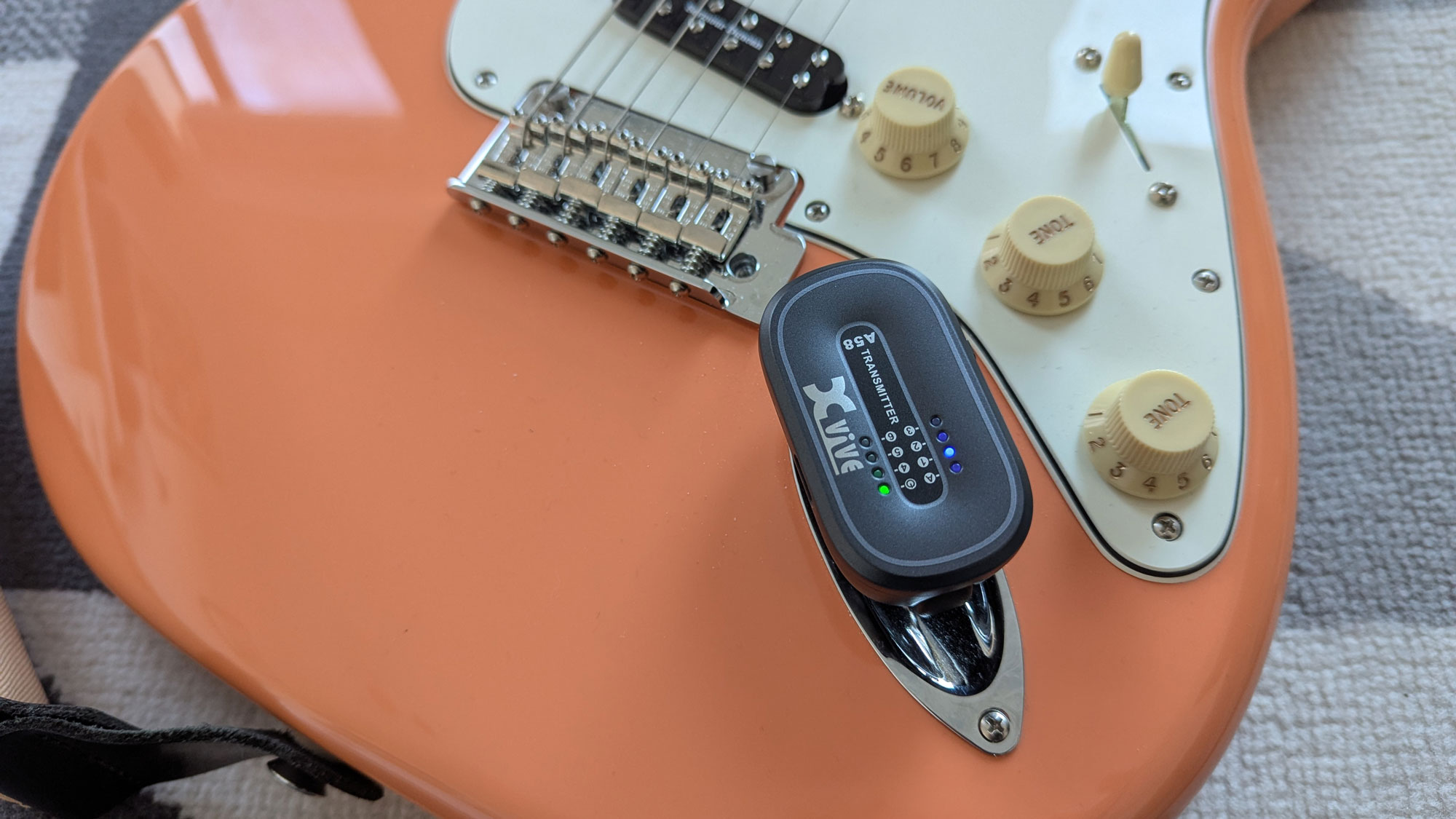
What is it?
Chinese effects and accessories specialist Xvive was one of the first companies to make guitar wireless systems compact and affordable with its U2 dongles. A world away from the pricey battery pack systems that accompanied pros stalking catwalks in stadiums, the U2 quickly became a staple among players gigging smaller venues.
The A58 is the followup to the company’s best-selling system, and improves it in just about every way. For starters, it takes its slightly uninspiring name from the 5.8GHz frequency range the new system operates in.
Many budget systems use the 2.4GHz range, which became the de facto norm for wireless tech, and as a result, it could get crowded, resulting in interference from other devices – it’s something you might encounter if, say, your vocalist is also using a wireless mic. The 5.8GHz frequency range solves that problem.
Another major change is the appearance of the unit. The U2 may have been a popular product, but the number-one complaint from guitarists and bassists was the look: that bulbous, curved shape didn’t exactly scream ‘pro’.
Thankfully, the A58 is much sleeker, with a pill shaped design and a subtle grey tint. A black and grey jack collar distinguish the transmitter and receiver, which under regular lighting, makes it easy to quickly identify which plugs into your guitar and which goes in your amp (although you may find it harder to spot the difference under darker stage conditions).
Any players lucky enough to be gigging large enough stages will be pleased to note the device’s range is now 100ft versus the U2’s 70ft. Otherwise, all the important audio specs remain the same: uncompressed 24-bit/48kHz audio, a signal-noise ratio of 110dB to keep hiss to a minimum, and a latency of just 5ms.
Despite the upgrades, the battery life is still rated at five hours – it takes two-and-a-half hours of charging via the included dual-USB cable to get there, but you can get an hour of charge from 30 minutes, if you’re in a hurry ahead of that last-minute support slot. It’s also worth noting that Xvive has included a battery compartment on the A58, which means the lithium-ion battery is replaceable should it fail. Big thumbs up for that.

Where the U2 had just one channel, you get a choice of six with the A58, and by holding the Channel Scan button on the receiver, it will automatically pick the best one with the strongest signal. Set the transmitter to the same channel, and it will recall your setting when you turn both sets off and on.
Finally, there’s the option of passive and active modes to suit guitars from vintage Strats through to Fishman-loaded ESPs, while the whole lot comes in a hardshell carry case, which is a neat touch.
Usability and performance
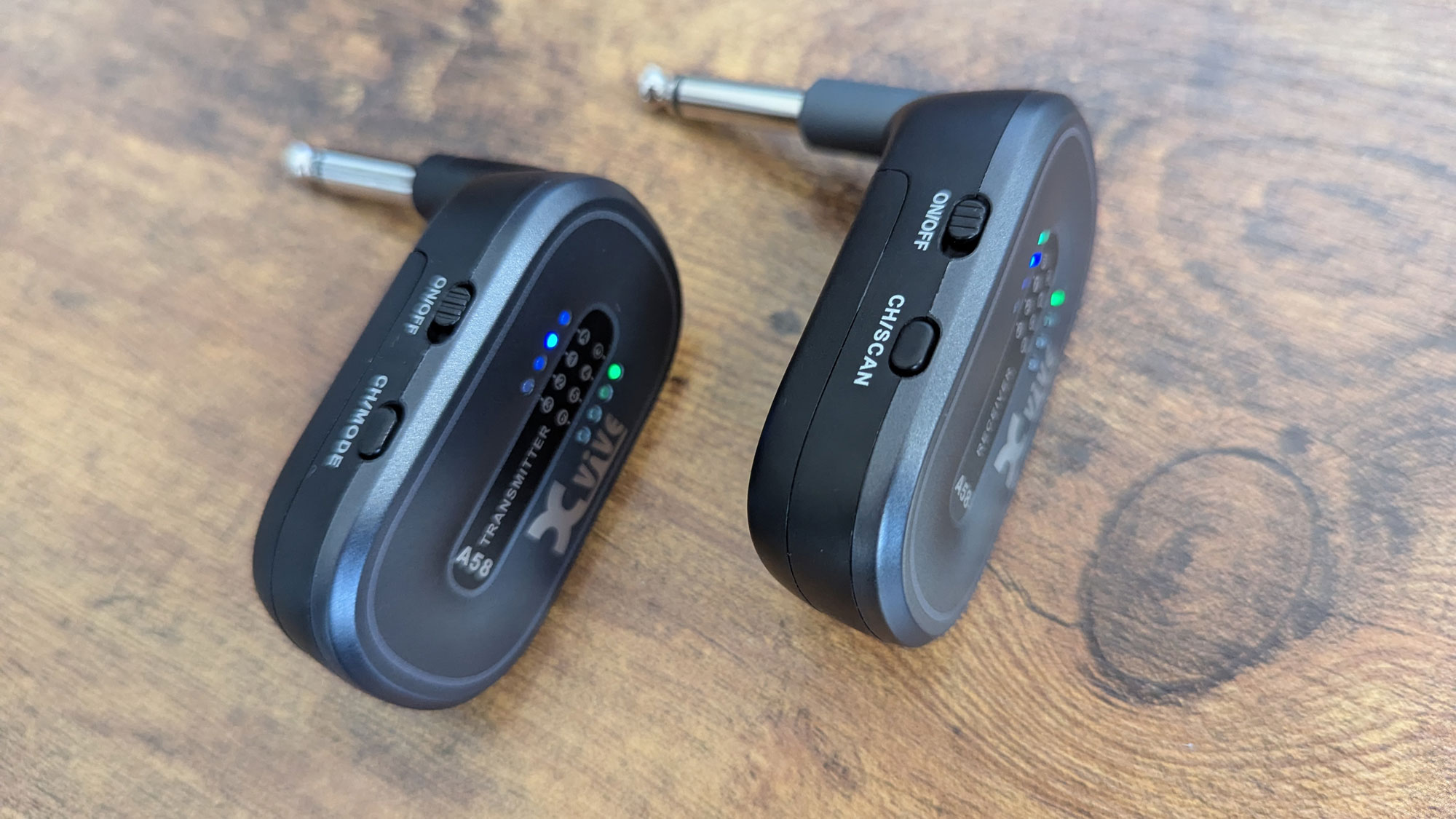
I tested the A58 at a live show, at rehearsal and at home, and I was impressed by its performance in all three scenarios, with zero dropouts and impressive signal integrity.
First off, pairing the transmitter and receiver takes less than two seconds, and for most players, as soon as you connect, that’s it: there’s no noise, and for my rig, at least – drive pedals into a clean amp – the tone was identical to my guitar cable. I switched back and forth a few times, and I couldn’t tell the difference.
My pick attack and dynamics were intact, and the latency is low enough that I couldn’t feel it. Plugging in my EMG-equipped Cort, the active mode – accessed by holding the Ch/Scan button on the Receiver – was a good output match to the hotter pickups.
The A58 is also a quieter system than some other compact models I’ve tested, which added hiss to the signal. No such problems here, even at the dingy basement gig – suspect power and lighting circuits included – where I put it through its paces. I didn’t have the need to switch channels at that show, but swapping between the six options is quick and hassle-free.
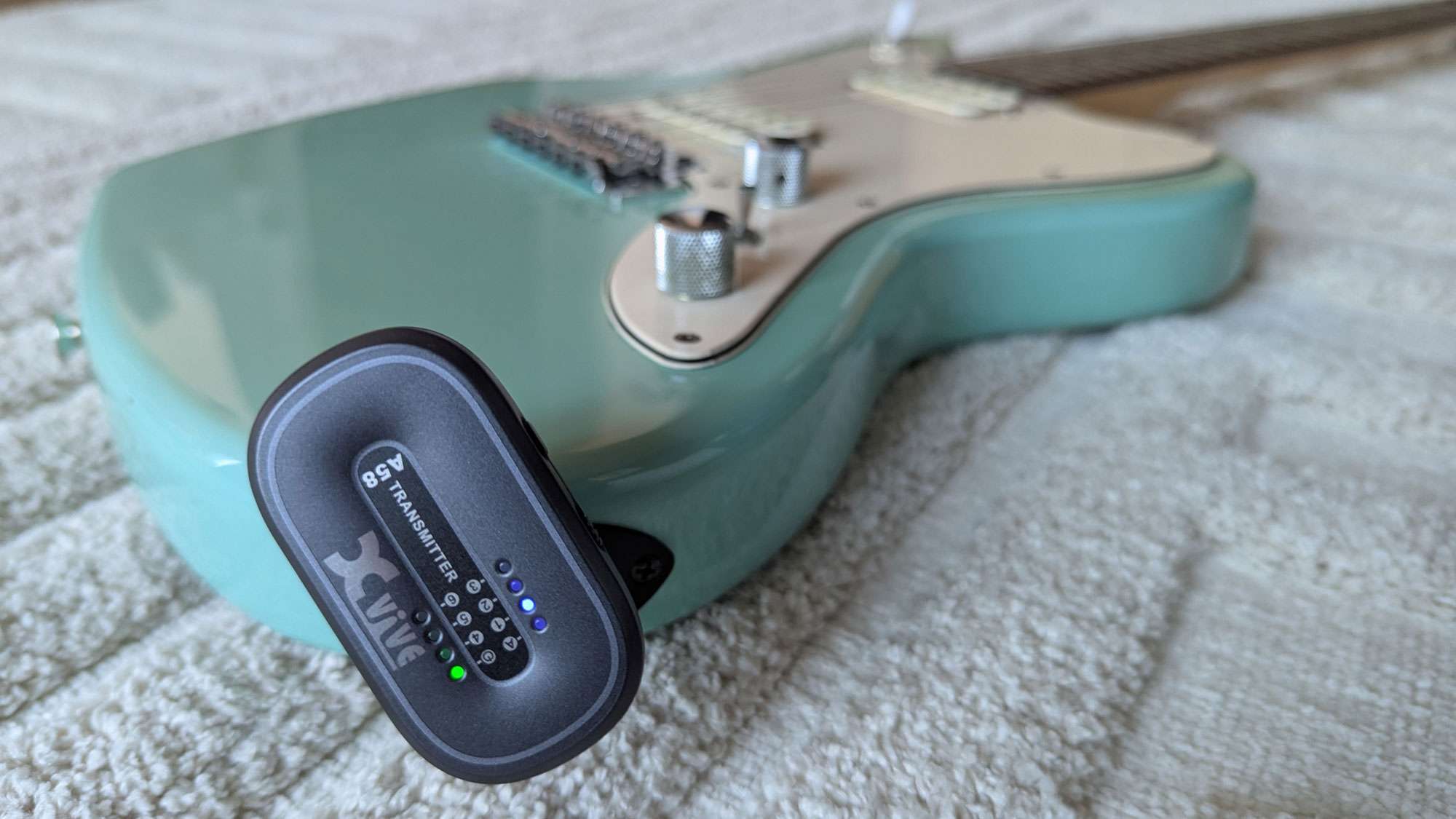
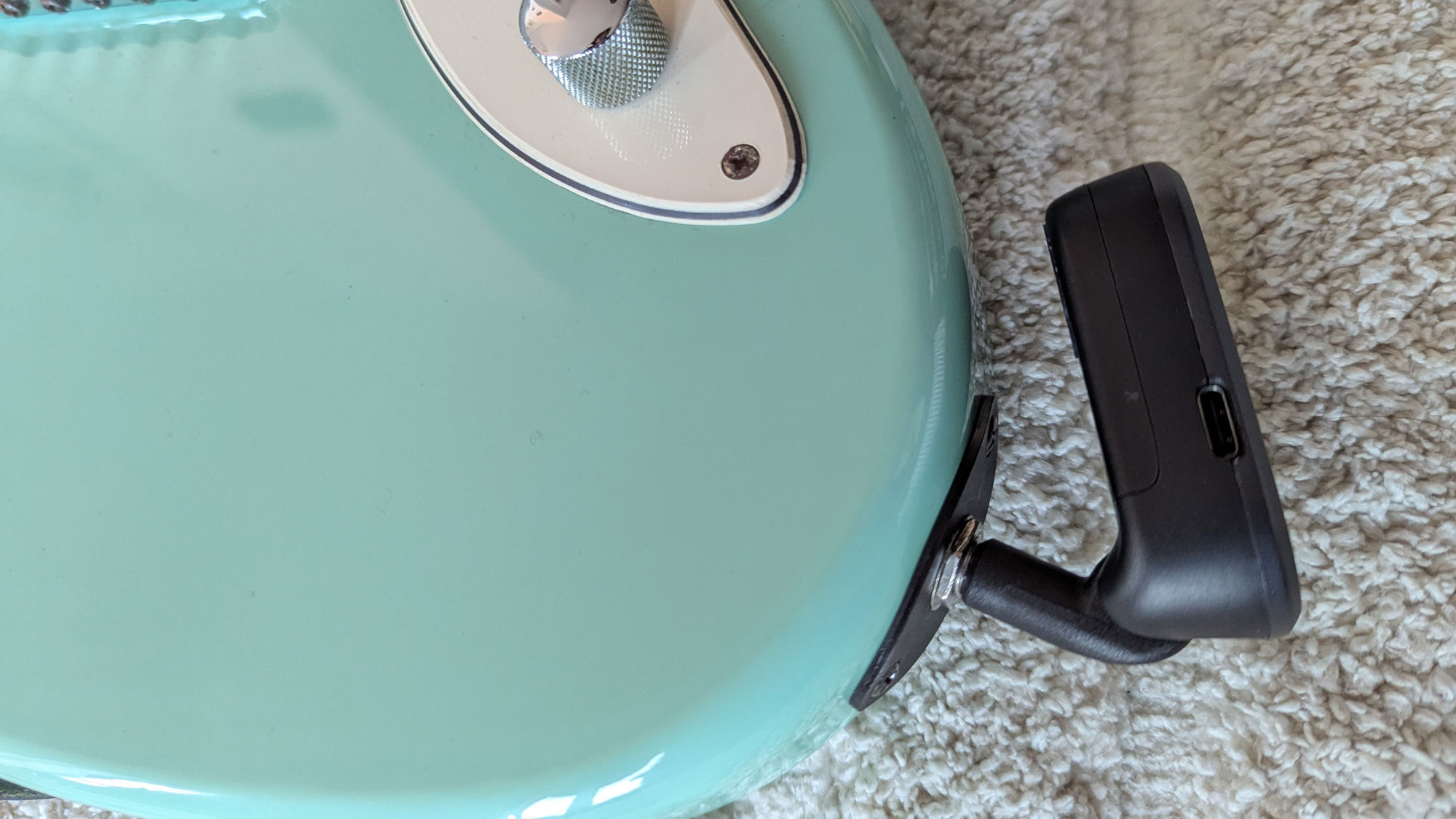
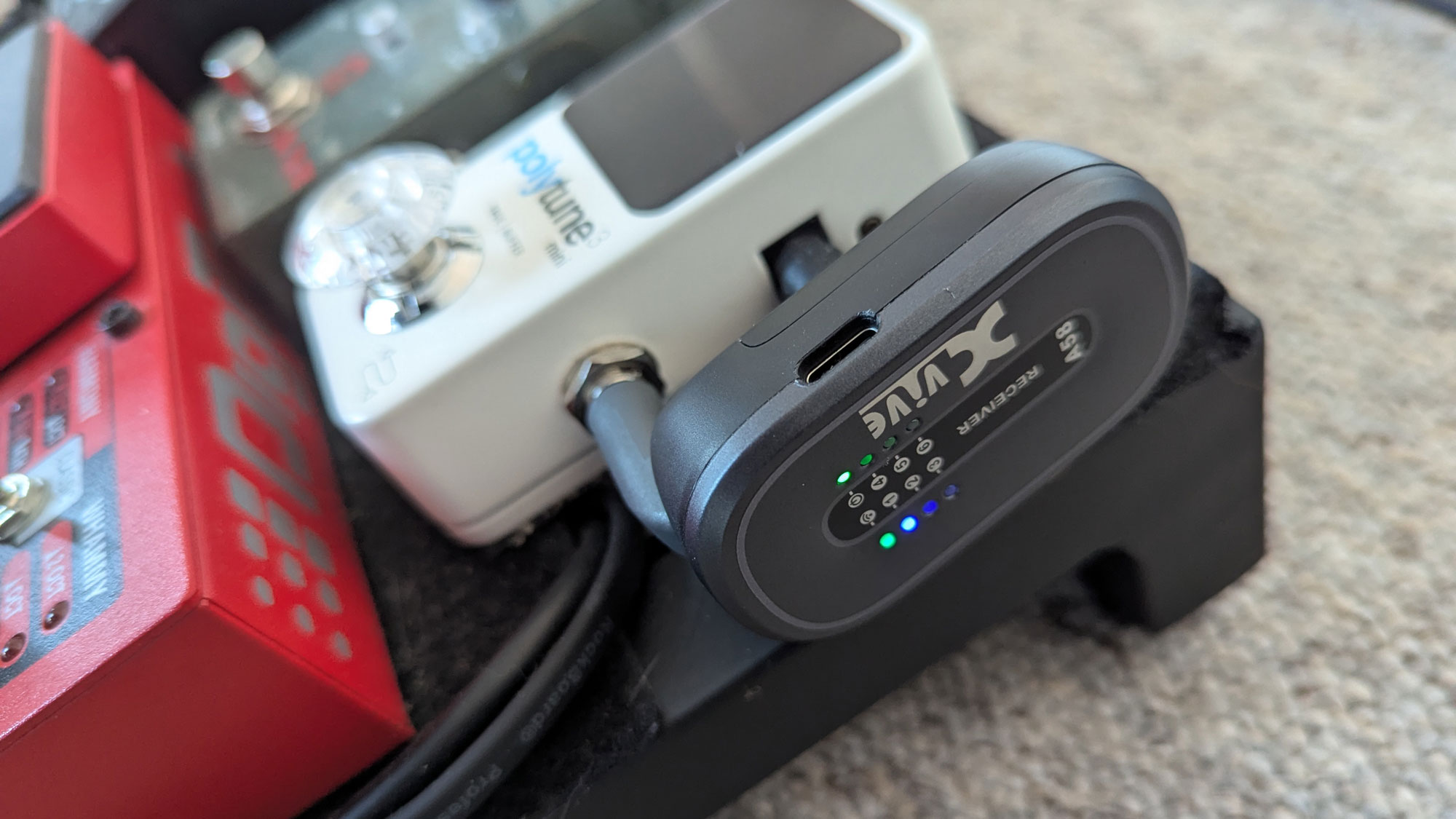
One feature to note is that the transmitter and receiver are activated via a slider switch. Most budget wireless systems I’ve used require you to hold an on/off button for a couple of seconds, so I was initially worried about knocking the Xvive’s switch in the middle of a performance. But it’s small enough that you’re unlikely to hit it, and I had no problems at rehearsal or the show.
The A58 fits in any guitar I tried it with, including the all-important recessed Strat jack, although I did notice it protruded slightly more from guitar and bass jacks than some rival designs – this is presumably to maximize compatibility. The jack hinge feels sturdy and stays in place, although some of my wilder flails did cause it to rotate a little.

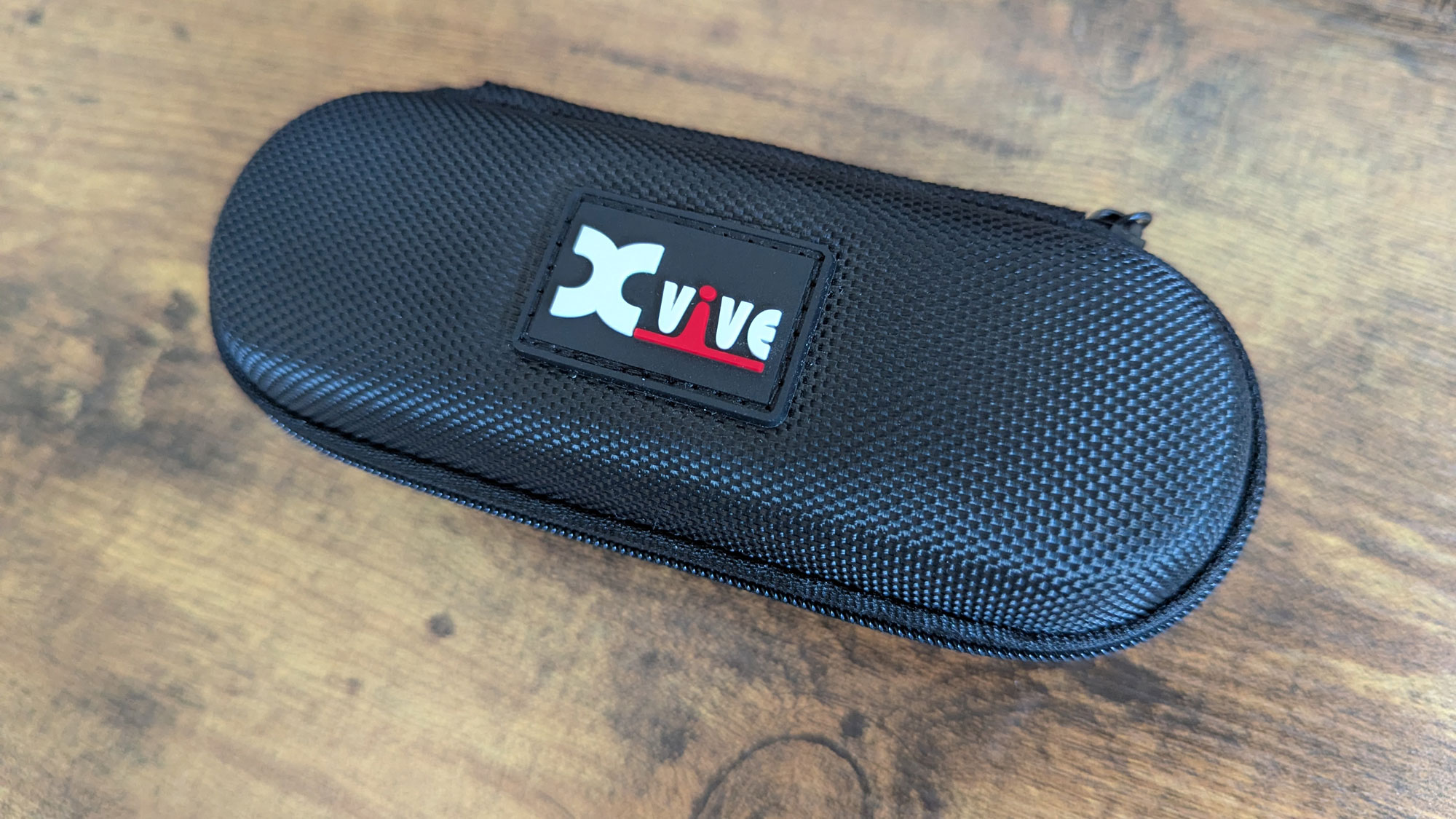
In person, I dug the sleek, stealthy look of the units, which don’t draw attention and feel more robust than many budget wireless designs (I do wish Xvive had a slightly cooler logo, though).
Onboard LEDs for the selected channel, active mode (transmitter) and wireless connection (receiver) are a nice bonus, but as expected, I couldn’t pick out which was the transmitter and receiver when I was plugging in. A fluorescent pen or masking tape could be useful for regular use.
While I didn’t get to play a venue large enough to allow me to judge the 100ft range, I did conduct the obligatory ‘play guitar downstairs into an amp upstairs’ test, which introduced only a tiny bit of latency, despite two floors and numerous Wi-Fi signals in between.
Finally, I got the rated five hours of battery life out of the A58 after playing on and off over a period of a few days. It took a half-hour gig and three-hour rehearsal before before I worried about charging – the LED will turn yellow to indicate 6-40% charge, solid red for 1-5% and blinking red when it’s less than 1%.
Verdict
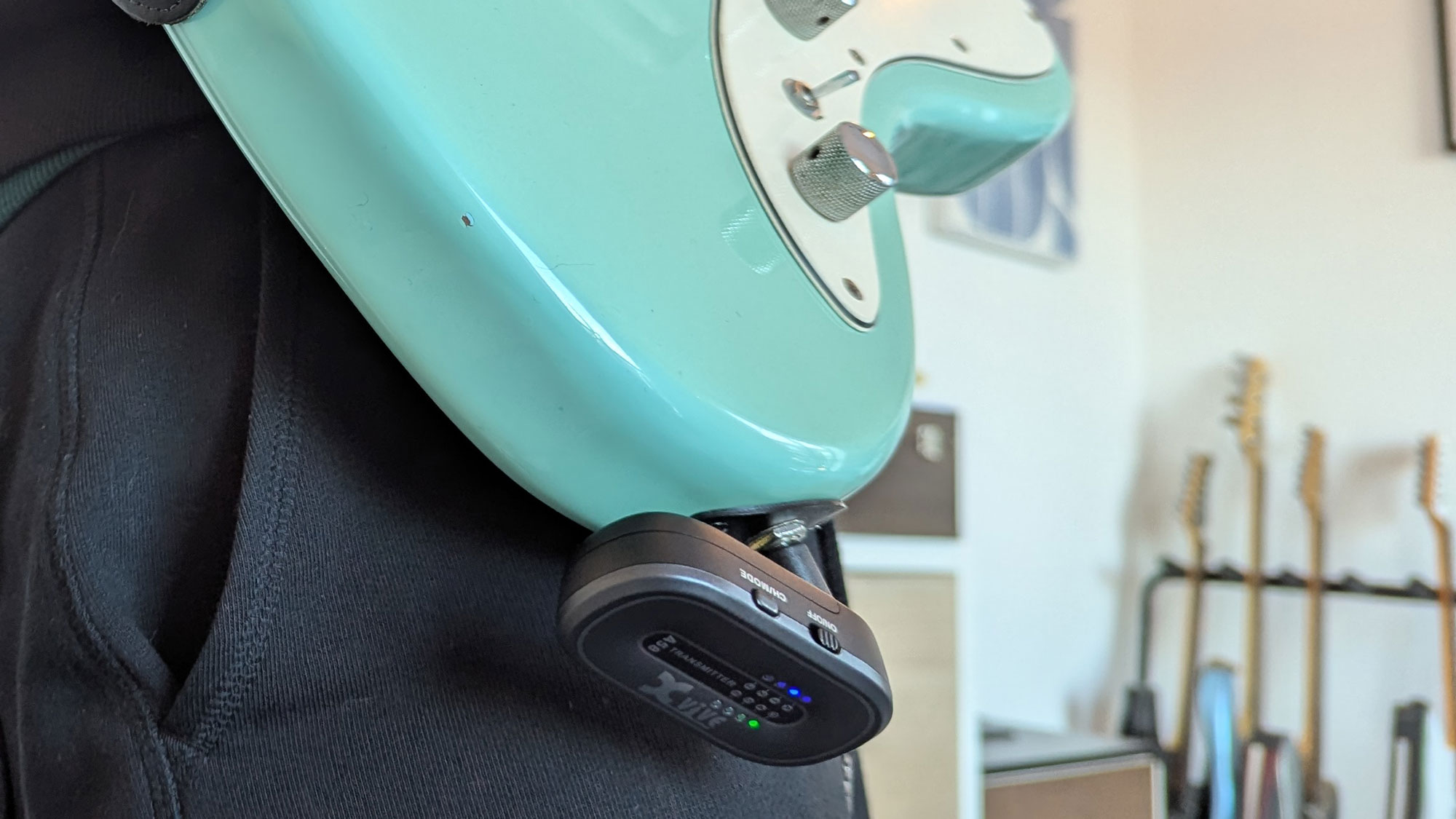
Guitar World verdict: Xvive has been one of the market leaders in the budget wireless system space for years now, and the A58 takes its designs to new heights. It’s pricier than some rivals, but the sturdy build quality, crystal-clear sound reproduction and noise-free performance are worth the extra outlay. It’s one of the best compact wireless systems you can buy.
Specs
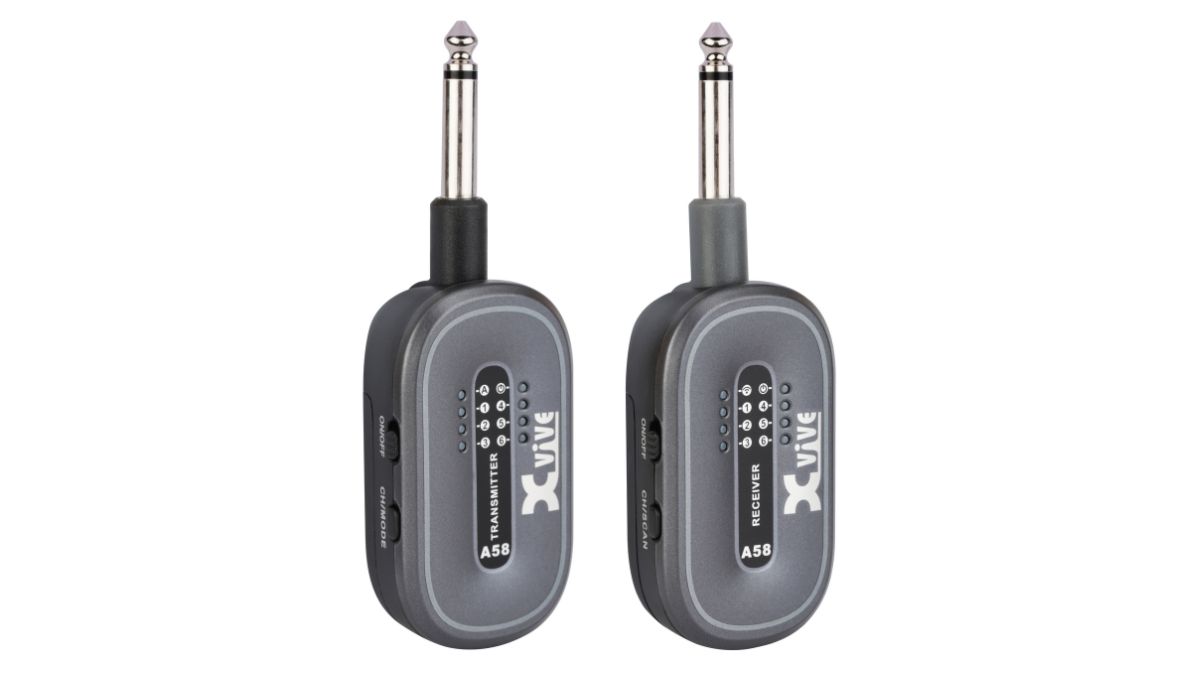
Launch price: $149/£125
Type: Guitar wireless system
Controls: On/off, Channel/Scan (receiver), Channel/Mode (transmitter)
Connectivity: 1/4" mono jack
Battery life: 5 hours
Contact: Xvive







